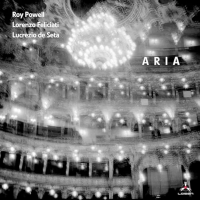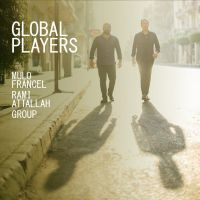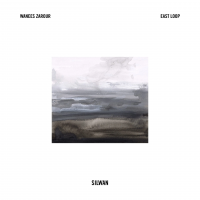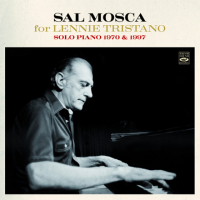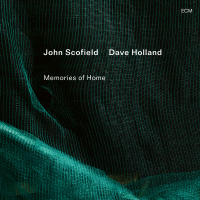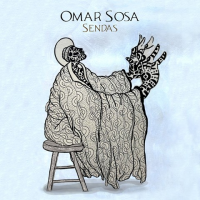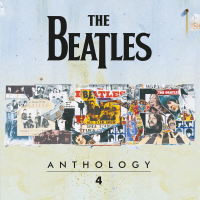Home » Jazz Articles » Album Review » Greg Sinibaldi: Ariel
Greg Sinibaldi: Ariel
While I encourage readers to explore the intricacies of the EWI, I will just explain briefly that the instrument is a wind driven synthesizer that is facilitated in the same manner as a woodwind instrument. A Nyle Steiner invention of the '70s, the EWI has had a number of jazz adapters over the years but remains fairly rare. It produces synthesizer sounds that in no way resemble keyboard based synth sounds. "It's a wind-driven synthesizer with a breath sensor that knows air velocity and pressure," Sinibaldi explains. It appears by this recording, to be a fertile sonic environment to deconstruct the dark reaches of Plath's poetry, and explore the seemingly taboo territory of the dark inner reaches of consciousness, striving to overcome troubling thoughts, and look forward with hope. "I think it's just as hopeful," Sinibaldi maintains. "It's often interpreted as being about suicide, but I'm more interested in the imagery of the Phoenix, particularly in the last stanzas. I love the rising from the ashes/ rebirth story and for me that's what 'Lady Lazarus' is all about. It's ultimately about vindication, about the hope and desire to rise above after extreme hurt. There's something inevitable about that hope in this poem."
The pieces are named for the eight individual poems of Plath's collection, "Ariel," yet to summarize here per each poem would not be practical or definitively specific. Sinibaldi takes bits of each selection and interprets those that impacted him most in reading these poems written by Plath just five months before she tragically took her own life. It is this artistic daring, this musical courage that is truly the guiding influence of this album.
Nevertheless, being innovative in terms of concept and experimentation, does not guarantee music that is emotive to its audience, that moves the listener intellectually, and physically as well. Stripping down this project from the Sinibaldi's fascination with the EWI, his use of super collider technology, and the sensory interpretation of Plath's poetic narrative ultimately leaves us with the music itself, and the musicians facilitating it.
The music on Ariel clearly eschews any sort of genre identity, making the narrative the central designation to lead the listener to an understanding of its dreary, dreamy stretches of imaginative mayhem, and small places to land, regroup, and repeat the cycle on a different conscious level. Reading the poetry of Plath, indeed having an intuitive understanding of it, is a near necessity to fully appreciate Sinibaldi's deep intellectual and emotional attachment to her work. In some ways, it reminds us all of times in our conscious lives when we either give in to a dark reality, or rise from the ashes of darkness, in hope of grasping the light.
Ariel strikes a remarkable resemblance to works in other art forms, in particular to Vancouver choreographer Crystal Pite's brilliant ballet piece, "Plot Point." Pite assigns an alter ego to each character in the form of another dancer clad in white, representing the dark side of consciousness encountering a dilemma on the edge of darkness. In the moment, one must make a decision between violent, and nonviolent response to social and conscious interaction, and in an extreme case, between death and precious life.
Guitarist Ferreira moves the trio into a metal like stimulus on "Cut," that exemplifies the extreme edge of personal darkness Plath encountered. His intro on "Elm" exudes an emptiness, and loneliness that is almost too much to bear. Which way the pendulum swings between light and dark is personified by Sinibaldi's peaceful swashes of color and thick, impenetrable light. It is the renewal of hope that Sinibaldi sees in Plath's work, that can be insidiously difficult to fathom.
Aside from the narrative concerning Plath's poetry, and the phenomenon that is Sinibaldi's creative use of the EWI, the most satisfying musical attribute to this recording is the contributions of dynamic drummer Ted Poor. He has a unique ability to shape and rhythmically influence the direction of the music, with a refreshingly organic and original approach. His participation in diverse projects with artists such as Kurt Rosenwinkel, Bill Frisell, Chris Potter and Maria Schneider has given Poor a modern, forward thinking attachment to a wide swath of jazz and improvised music. Sinibaldi could not have made a better choice.
Clearly the narrative of Plath's work led me to a deeper understanding of this recording. Personally, my foray into her work precedes this album by decades, but one has to wonder how many listeners will be enabled as such. This is what required the courage and emotional intensity put forward by the innovative artist that is Sinibaldi. How often one wishes to foray into this abyss of darkness and renewal is the question. It is a difficult, and at times painful listen. Its brilliance is definitive. Perhaps, peering into my own dark conscious and subconscious recesses is what provides this discomfort. Sometimes tearing apart the protections of everyday routine, and mortal being reveals why those organic emotional defenses form. On Ariel, Sinibaldi invites us to walk along the edge of that precipice without caution.
Track Listing
1. Arrival of the Bee Box - 10:42 2. Lady Lazarus - 4:01 3. Cut - 4:36 4. Lady Lazarus Part II - 11:26 5. Black Sweet Blood Mouthfuls - 7:23 6. The Atrocity of Sunsets - 6:15 7. Wintering in the Dark - 7:44 8. Elm - 5:39
Personnel
Greg Sinibaldi
saxophone, tenorGreg Sinibaldi - EWI/Electronics; Ted Poor - drums; Ryan Ferriera - guitar.
Album information
Title: Ariel | Year Released: 2017 | Record Label: Self Produced
Tags
PREVIOUS / NEXT
Support All About Jazz
 All About Jazz has been a pillar of jazz since 1995, championing it as an art form and, more importantly, supporting the musicians who make it. Our enduring commitment has made "AAJ" one of the most culturally important websites of its kind, read by hundreds of thousands of fans, musicians and industry figures every month.
All About Jazz has been a pillar of jazz since 1995, championing it as an art form and, more importantly, supporting the musicians who make it. Our enduring commitment has made "AAJ" one of the most culturally important websites of its kind, read by hundreds of thousands of fans, musicians and industry figures every month.














